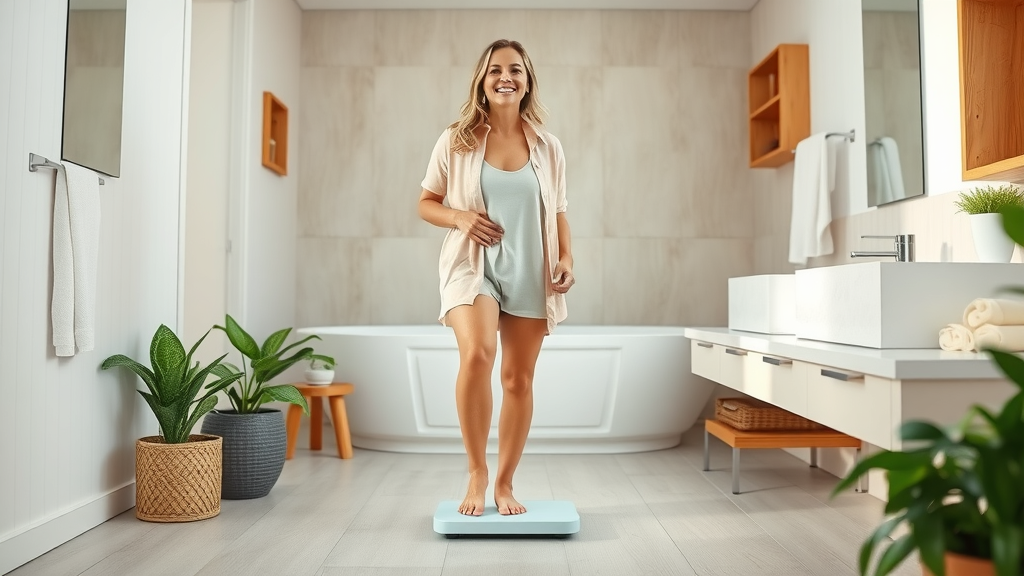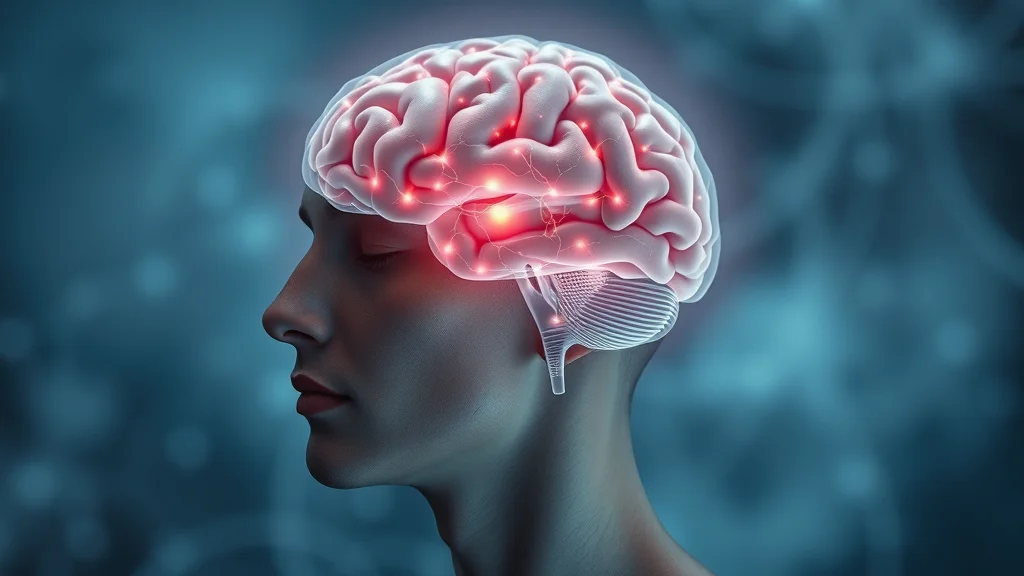Did you know that nearly 70% of people in the United States who regularly practice more effective self-hypnosis report significant improvements in their mental health, such as reduced stress and enhanced well-being? While self-hypnosis may sound unconventional, new research reveals it can have measurable effects on a person’s subconscious mind, fostering not just temporary relaxation but lasting positive change. This guide will equip you with advanced deepening techniques, expert strategies, and everything you need to master more effective self-hypnosis—and achieve real transformation.
Startling Insights: Why More Effective Self-Hypnosis Matters

Compelling Statistic: Studies show self-hypnosis can boost therapeutic outcomes by up to 67% when deepening techniques are consistently applied.
Unconventional Fact: Neuroscientists have found that self-hypnosis can alter critical thoughts and emotions by shifting how the conscious mind interacts with the subconscious mind.
Why does this matter? Self-hypnosis isn’t just a relaxation tool; it’s an evidence-driven way to target unhelpful thought patterns, aid in weight loss, manage chronic pain, and even help with quitting smoking. Mastering more effective self-hypnosis can turn a fleeting hypnotic state into a powerful, everyday skill that supports mental health.
What You'll Learn to Achieve More Effective Self-Hypnosis
Overview of reliable induction techniques: Understand proven methods for rapidly entering a relaxed state.
Step-by-step guide to deepen your self-hypnosis practice: Unlock actionable, expert-backed strategies.
Common mistakes that hinder more effective self-hypnosis: Avoid typical setbacks and optimize your sessions.
The potential benefits, including weight loss and stress reduction: Discover how hypnosis can support your most important health goals.
FAQs and expert recommendations: Get the answers and insights you need to make lasting change.

This comprehensive guide is designed to take beginners and seasoned practitioners alike from basics to breakthrough results in more effective self-hypnosis.
Understanding More Effective Self-Hypnosis: Definition and Science
What is More Effective Self-Hypnosis?

More effective self-hypnosis is a process where you guide yourself into a hypnotic trance, bypassing the critical conscious mind to access the subconscious mind. This state helps you reshape negative thoughts and apply powerful suggestions for positive change. Unlike ordinary relaxation, self-hypnosis leverages focused attention and deepening techniques to optimize the quality of your hypnosis session. When you close your eyes, breathe deeply, and focus inward, you can achieve a relaxed state in which your thoughts and emotions become more malleable, leading to noticeable improvements in habits, stress levels, and mental wellness.
This is more than just closing your eyes and waiting for magic to happen—effective self-hypnosis uses rigorous, science-backed induction techniques to reliably create lasting transformation. Whether your goal is pain relief, weight loss, or stress management, learning to induce and deepen a hypnotic trance is a practical skill that anyone can cultivate for real-world benefits.
The Science Behind Induction Techniques and Hypnotic States
Self-hypnosis works by creating a bypass around the conscious mind, allowing targeted suggestions to influence the subconscious mind. Standard induction techniques—such as progressive relaxation and visualization—align body and mind, causing the brain’s wave activity to shift from alert beta states to slower alpha and theta rhythms often associated with meditation and deep relaxation. This transition primes your mind for reprogramming unhelpful thought and behavior patterns.
Researchers in the United States have demonstrated that entering a state of hypnosis heightens suggestibility, especially for goals like weight loss, chronic pain management, or habit change. Clinical studies commonly report that hypnosis can enhance a person’s perceived control over negative thoughts and emotions. The key is not just inducing hypnosis, but using the right deepening strategies for more effective self-hypnosis results. When combined, these factors can lead to lasting improvements in mental health and well-being.
Potential Benefits of More Effective Self-Hypnosis
Practicing more effective self-hypnosis comes with a suite of potential benefits—from weight loss and pain relief to managing anxiety or quitting smoking. By targeting the subconscious mind, self-hypnosis enables you to replace unhelpful thought patterns with empowering alternatives, ultimately supporting personal transformation. For example, studies have found that those who regularly practice self-hypnosis are better able to manage stress, alleviate chronic pain, and make lasting health improvements compared to those who don’t tap into this state of focused relaxation.
These benefits don’t stop at health. Self-hypnosis can also improve confidence, motivation, and resilience by nurturing a more positive mindset. Whether you want to achieve a sense of calm, break a habit, or enhance your performance at work or school, mastering these deepening techniques can give you a real edge in reaching your goal.
The Importance of the Right Induction Technique in More Effective Self-Hypnosis
Classic Induction Techniques for Self-Hypnosis
Progressive relaxation
Visualization
Countdown method

Choosing the proper induction technique is vital for achieving a real hypnotic state—not just a fleeting sense of calm. Techniques like progressive relaxation, visualization, and countdown methods have been scientifically validated and widely practiced for decades within the hypnosis community. For example, progressive relaxation involves sequentially relaxing each body part, allowing your mind to gently transition into a receptive state while minimizing conscious resistance.
Visualization, another proven induction technique, harnesses the power of imagination to transport your mind to soothing environments, facilitating rapid transition into deeper states of focus. The countdown method relies on counting down from a set number while encouraging you to relax your eye muscles and breathe deeply, further accelerating entry into a meaningful hypnotic trance. Use these foundational methods as building blocks for more effective self-hypnosis.
Comparing Guided vs. Self-Induced Hypnosis for More Effective Self-Hypnosis
Many beginners wonder if guided hypnosis—where a practitioner leads you—delivers more effective self-hypnosis than self-led sessions. Guided hypnosis offers external structure and expertise, making it ideal for those new to hypnotic states or those struggling to maintain focus. However, with practice and the right tools, self-induced hypnosis can be just as effective, and offers unmatched flexibility, privacy, and autonomy for ongoing transformation.
The most effective self-hypnosis approach often blends both. Use guided tracks for new experiences or to break through plateaus, then transition to self-led sessions as you gain confidence. Ultimately, deepening techniques are key in both, ensuring you reach the powerful subconscious mind to make lasting change.
Common Obstacles with Induction Techniques—and How to Overcome Them
Obstacles such as distracted environments, inconsistent practice, or misused induction techniques can sabotage even the most well-intentioned self-hypnosis session. For instance, failing to set a comfortable position or allowing negative thoughts to intrude may prevent a deep hypnotic trance. Overcoming these barriers requires thoughtful troubleshooting: choose a time and place free from distractions, use calming background sounds, and be patient with your progress.
Regularly evaluating and adjusting your technique is crucial. If you have difficulty entering a relaxed state, it may help to incorporate more incremental muscle relaxation or auditory cues like soft music or affirmations. Remember, practicing self-compassion and curiosity can transform obstacles into valuable learning opportunities on your self-hypnosis journey.
Deepening Techniques: How to Enhance More Effective Self-Hypnosis
Steps and Strategies for Deepening Induction
Breathwork techniques

Incremental muscle tension release
Use of auditory triggers—sound, music, and affirmations
To achieve deeper states in more effective self-hypnosis, experts recommend layering specific strategies. Breathwork techniques, such as slow, conscious diaphragmatic breathing, serve as powerful anchors for focusing attention and calming the body. While maintaining a comfortable position, focus on taking a deep breath in through your nose, hold for a few seconds, and exhale slowly. This simple repetition calms the nervous system and primes the subconscious mind for suggestion.
Incremental muscle tension release involves tensing and relaxing each body part, moving systematically from head to toe. This encourages full-body relaxation, dissolving physical tension that can block a true hypnotic state. Introducing auditory triggers—like gentle music or personalized affirmations—further engages the conscious mind, making it easier to bypass resistance and deepen your trance. These integrated strategies significantly amplify the potential benefits of every self-hypnosis session.
Layering Techniques for Lasting Hypnotic Depth
Begin in a comfortable position and close your eyes softly.
Focus on progressive muscle relaxation, moving sequentially through each body part.
Take several slow, deep breaths to settle your thoughts and emotions.
Visualize a peaceful environment or imagine descending a staircase with each exhale.
Add auditory triggers: play soft music, or repeat personal affirmations to yourself.
Continue deepening for several minutes, maintaining focused attention on your breath and the sensations of relaxation.
When ready, gently bring your awareness back and open your eyes, documenting the session’s outcome.
Layering multiple approaches ensures that each session is tailored to your mind’s needs, significantly enhancing the likelihood of reaching—and maintaining—a deep hypnotic trance.
How to Measure the Depth and Effectiveness of Self-Hypnosis Sessions
Deepening Technique |
Average Reported Depth |
Reported Success (Based on Surveys) |
|---|---|---|
Progressive Relaxation + Visualization |
Deep |
4.4/5 |
Breathwork + Affirmations |
Moderately Deep |
4.2/5 |
Countdown Method + Music |
Moderate |
4.0/5 |
Guided Audio Only |
Light |
3.7/5 |
By tracking subjective feelings after each session, such as sense of calm, reduced negative thoughts, or lighter mood, you can assess whether your self-hypnosis is becoming more effective. Journaling these observations is highly recommended to spot improvements and refine approaches as needed.
Potential Benefits of More Effective Self-Hypnosis

Applications for Weight Loss, Stress Management, and Confidence Building
One of the most researched potential benefits of more effective self-hypnosis is its impact on weight loss and stress management. Multiple studies have found that regularly using deepening techniques increases adherence to healthy habits, curbs negative thoughts and emotions around eating, and promotes gradual, sustainable change. In fact, weight loss hypnosis programs report higher success rates than many willpower-dependent diets.
Beyond weight management, self-hypnosis is widely used for chronic pain relief, boosting confidence, overcoming unhelpful thought patterns, and even supporting people in quitting smoking. The ability to self-induce a relaxed state at will can significantly enhance mental health by improving sleep, reducing anxiety, and fostering a deeper sense of calm in daily life.
Case Studies—Real-Life Examples of Potential Benefits
Consider the following real-life scenario: Jessica, a 42-year-old professional, struggled for years with stress-related eating and a persistent sense of overwhelm. By adopting more effective self-hypnosis—starting with progressive relaxation and deepening with music and affirmations—she lost over 20 pounds and now experiences a greater sense of calm and confidence daily. Another example: Mark, a teacher with chronic pain, regularly uses guided self-hypnosis to manage his discomfort, reporting significantly reduced pain and less reliance on medication after just a month of consistent practice.
“Self-hypnosis is a safe, practical tool to unlock natural healing and mental change. When practiced with deepening techniques, it empowers you to create lasting results in health, confidence, and well-being.” — Linda Carter, Certified Hypnotherapist
Step-by-Step Guide: Unlocking More Effective Self-Hypnosis at Home
Select the right induction technique
Prepare your environment
Use progressive relaxation
Deepen with layered techniques
Incorporate personal affirmations
Document your session’s results
Follow this guide to build your practice:
Select the right induction technique: Choose from progressive relaxation, visualization, or countdown methods to initiate your session.
Prepare your environment: Find a quiet, comfortable spot where you won’t be disturbed. Remove clutter to help the mind settle.
Use progressive relaxation: Systematically relax each body part, from toes to scalp, to ease into a hypnotic trance.
Deepen with layered techniques: Combine breathwork, music, and affirmations to enhance depth and prevent distractions.
Incorporate personal affirmations: Repeat positive, goal-oriented statements once fully relaxed to direct your subconscious mind.
Document your session’s results: After you open your eyes, jot down insights, emotions, and outcomes to track your progress.
Best Practices for Consistency and Progress

Journal your experiences: Keeping a record of each hypnosis session helps track subtle improvements and spot which techniques yield the best results.
Monitor tangible improvements: Look for positive shifts in mood, confidence, and the resolution of negative thought patterns over time.
Consistency is key. Try to choose a time each day for your practice, and remember—progress may be gradual, but with regular sessions, benefits accumulate, making lasting transformation possible.
Common Mistakes That Sabotage More Effective Self-Hypnosis
Top Pitfalls When Attempting More Effective Self-Hypnosis
Poor environment setup

Inconsistent practice
Misuse of induction techniques
Many practitioners struggle to achieve more effective self-hypnosis due to avoidable mistakes. Attempting hypnosis in a chaotic environment makes it difficult for the subconscious mind to relax or accept suggestions. Skipping sessions or being inconsistent lowers the benefits of cumulative deepening. Finally, misusing induction techniques—such as rushing muscle relaxation or not allowing enough time for trance—can leave the session shallow and unproductive.
Proactive troubleshooting is essential. Remove distractions, commit to a regular practice schedule, and give each stage of your induction technique the focus it deserves for optimal results.
How to Troubleshoot and Adjust Your Approaches for More Effective Self-Hypnosis
If you notice weak or inconsistent results, don’t give up—instead, troubleshoot your approach. Try a new induction technique, adjust your timing, or incorporate music or guided tracks. If you feel restless, reevaluate your environment or break the session into shorter spans with consistent repetition. Remember, every mind is unique; a method that works for one person may need adaptation for another. Persist, be flexible, and track changes to find what brings you into the deepest, most productive state of hypnosis.
Above all, approach self-hypnosis with an open mind and curiosity. Over time, you’ll find the right blend of techniques for peak personal benefit.
Expert Tips and Techniques to Maximize More Effective Self-Hypnosis
“Build your self-hypnosis routine on a foundation of curiosity and patience, always customizing techniques to your own mind and goals. Small adjustments reap big results.” — Dr. Paul Lin, Clinical Psychologist and Hypnosis Trainer
Practice daily or on a consistent schedule to reinforce neural pathways for positive change.
Experiment with combining breathwork and visualizations for richer hypnotic states.
Use high-quality guided audio for variety and deepening support.
Update personal affirmations as your goals evolve and progress is made.
Assess each session honestly—journal, try new approaches, and stay curious.
Start with these expert recommendations to accelerate your journey toward more effective self-hypnosis and real transformation.
People Also Ask: How to Make More Effective Self-Hypnosis?
How to make self-hypnosis more effective?
Find a quiet, comfortable position and set clear intentions for your session.
Use layered induction techniques (such as combining progressive relaxation with calming music) to deepen trance.
Repeat positive affirmations once in a full hypnotic state, targeting specific habits or mindsets you want to change.
Consistency, patience, and environment all dramatically impact results in more effective self-hypnosis.
What is the best way to hypnotize yourself?
The most effective self-hypnosis induction technique is progressive muscle relaxation, paired with deep, rhythmic breaths and visualization. Begin by tensing and relaxing each body part, then imagine descending a peaceful staircase or entering a tranquil space as you breathe slowly. Once you feel fully relaxed, focus on your goal and use personalized affirmations.
This systematic approach has been shown to elicit deeper, more lasting hypnotic states for most practitioners.
Does self-hypnosis really work?

Research across thousands of participants indicates that self-hypnosis is effective for many applications, including weight loss, pain management, and improved mental health. Anecdotal evidence also abounds: countless individuals report reduced negative thoughts, better sleep, and greater confidence after weeks of regular practice. However, as with any tool, results depend on consistency, technique, and individual receptivity.
What is the rule 4 of hypnosis?
Rule 4 of hypnosis states: “Every suggestion acts on the mind instantly unless it is met by a stronger suggestion or belief.” In more effective self-hypnosis, this means that positive affirmations work best when not canceled out by doubt or distraction. Create a tranquil environment and truly believe in your change; your subconscious mind will be more receptive, making each session much more effective.
Video Tutorial: Demonstrating More Effective Self-Hypnosis Deepening Techniques
In this comprehensive demonstration, watch a certified hypnotherapist guide viewers through a step-by-step process for deepening a hypnosis session. Key phases include: body scan, breathwork, using sound, and layering affirmations for the deepest, most productive self-hypnosis outcomes.
Troubleshooting: When More Effective Self-Hypnosis Doesn’t Seem to Work
Signs Your Self-Hypnosis Needs Improvement
Difficulty entering trance: If you remain hyper-aware or fidgety, adjustments in technique or environment are needed.
Lack of follow-through post-session: If suggested changes don’t stick, reinforce with more frequent sessions and journaling.
Honest self-assessment is vital. If you’re not achieving a sense of calm, positive change in thought patterns, or clear outcomes, it’s time to refine your approach.
Practical Adjustments for More Effective Self-Hypnosis
Experiment with session lengths, try new induction techniques, tweak your environment, or incorporate different auditory cues. Small, thoughtful changes often yield rapid improvement in the depth and effectiveness of your hypnosis sessions, helping you make lasting positive changes more efficiently.
Advanced Tips: Taking More Effective Self-Hypnosis to the Next Level
Combining Multiple Induction Techniques
For advanced practitioners, merging multiple induction methods—such as progressive relaxation plus guided imagery and breathwork—can deepen trance intensity. Explore layering these elements to individualize each session. Some find that rotating techniques keeps the conscious mind more engaged and less resistant, enhancing outcomes and helping overcome performance plateaus.
Leveraging several induction strategies within one session can improve focus, resilience to distractions, and responsiveness to affirmations, making your practice truly transformative.
Integrating Technology: Apps and Audio for More Effective Self-Hypnosis

Modern technology now offers a variety of supportive apps and audio tracks specifically designed for more effective self-hypnosis. Features like customizable induction scripts, calming soundscapes, and progress trackers make it easy to maintain consistency and raise the bar for each session. Try integrating reputable self-hypnosis apps or YouTube sessions into your routine for guidance, variety, and progress monitoring.
“Embracing technology can personalize and streamline self-hypnosis. Digital tools provide accessible structure, accountability, and a library of strategies to keep sessions fresh and effective.” — Samantha Lee, Digital Health Specialist
FAQs: More Effective Self-Hypnosis
How often should you practice more effective self-hypnosis?
For optimal results, aim for daily or at least three to five times per week. Consistent repetition helps reinforce new thought and behavior patterns.Is more effective self-hypnosis suitable for everyone?
While most people benefit, those with certain psychiatric or neurological conditions should consult a professional before starting any hypnosis regimen.Can more effective self-hypnosis help with anxiety or weight loss?
Yes, research supports its use in reducing anxiety, managing stress, and promoting healthy weight loss when integrated with broader wellness strategies.Are there any risks involved with more effective self-hypnosis?
Self-hypnosis is safe when used responsibly but should not replace professional treatment for serious mental health or medical conditions.
This video compilation shares transformative journeys from real-life practitioners who overcame obstacles and achieved weight loss, stress reduction, and more using advanced deepening techniques for self-hypnosis.
Key Takeaways: Mastering More Effective Self-Hypnosis
Deepen self-hypnosis using progressive muscle relaxation, breathwork, and auditory triggers for best results.
Consistency, journaling, and troubleshooting are paramount. Adjust your approach based on results and expert recommendations.
Benefits span weight loss, stress management, pain relief, and improved mental health.
Modern apps and technology can streamline sessions and track progress.
Ready to Transform Your Life? Try These More Effective Self-Hypnosis Techniques Today
Start integrating these deepening techniques into your daily routine, and witness firsthand how more effective self-hypnosis can empower your mind, reshape your habits, and unlock new levels of health and confidence with every session.
 Add Row
Add Row  Add
Add 




Write A Comment